Badami: Marvel of Temple Architecture
Overview: Badami, as the name indicates, has been derived from the dry fruit 'Badami' in Kannada meaning Almond. There goes a very interesting story behind it. Millions of years ago, the area was submerged under the sea. Over the years, due to the continuous transformation of the Earth's landmass, the water from the seas got shifted and still we can see the signs of marine life that once existed here. After a few centuries later, a massive volcanic activity took place due to which the sediments got deposited on the rocks giving it a dark red colour resembling the colour of Almond, hence the name Badami. Adding to this, all the structures in this town are red in colour.


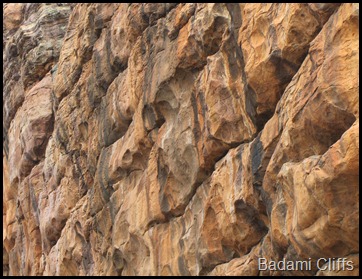

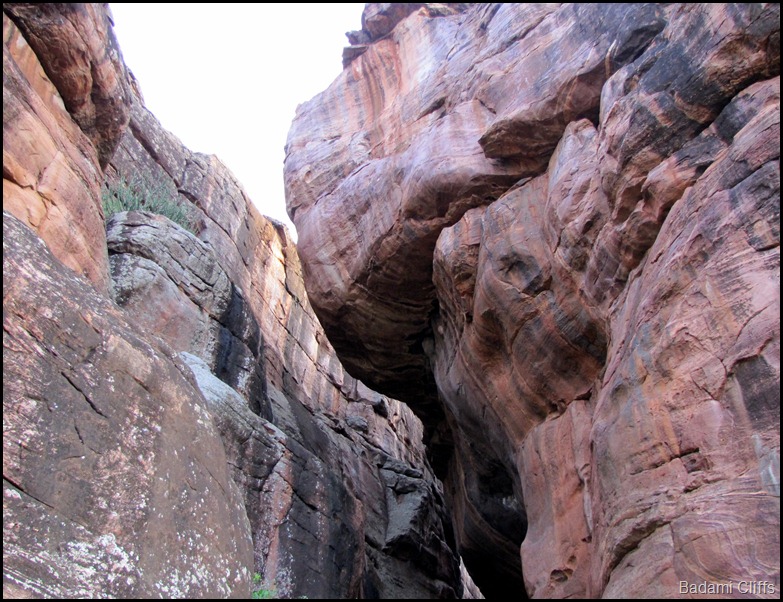
Badami, which was earlier called Vatapi, was the second capital of the Western Chalukya empire which flourished between early 6th century to 9th century. One can still feel the essence of the Chalukyas on visiting this ancient town.
We entered Badami at around 4pm in the evening after visiting the famous Banashankari temple belonging to the same era. The rocky canyons were already visible from a distance. Its always easier to explore the place if we hire guides at such places. So we hired one. Badami has a series of four rock-cut cave temples resembling the Ajanta and Ellora caves in Maharashtra.
The guide took us to the first cave, which is dedicated to Lord Shiva. We were welcomed by a carved figure of dancing Shiva, which is called Nataraja. The carving is so elegant and depicts 81 combinations of the Bharath Natayam with 18 hands.


Then there is a carving showing 4 different positions of a baby, Sleeping, sitting, and then rolling over playfully, all shown in a small area with optimized carvings.

One more sculpture shows Lord Shiva as ardhanareeshwara, meaning half-woman. The portrait is flanked by Parvati at one end and Bhringi Maharishi on the other. This was the way of the Chalukyas of narrating the story of Bhringi who worshipped Lord Shiva but gave no importance to Goddess Parvati. Furious with this attitude, Parvati cursed him and turned him into a skeleton so that he could not even stand. Shiva provided him a third leg so that he can stand on it. This had no impact on Bhringi's devotion to Lord Shiva and continued worshipping him alone. Tired of this, Shiva transformed himself into the form of Ardhanareeshwara so that he could worship both Shiva and Parvati. Bhringi cleverly transformed himself into a bee and started circling only the male part of Lord Shiva(i.e only the right leg). Impressed by the true love and devotion to Lord Shiva, Bhringi was then granted freedom from all curses by Parvati.
The other side of the hall is the carving of the Harihareshwara, in which Hari means 'Vishnu' and Hara means 'Shiva'. The Chalukyas worshipped all Gods equally so they named it as Harihara, where Vishnu's name appears first, but while carving it, they kept Shiva on top so that there is no bias, flanked by women on both sides.


On top of a wall we could see carvings of Shiva and Parvati sitting on the vehicle, the Nandi bull, much similar to a boy and a girl sitting on a motorcycle.

Also there were many carvings on the ceilings of Adishesha and other Gods like Bala Ganesha trying to imitate his father's dancing. From a distance we could see a fort which indicated the range of the Badami Chalukyas. It had a secret passage which is very steep to climb and was used to keep an eye at the intruders. One could get a panoramic view of the historic town from the top of the fort.
We then proceeded to the Cave 2, dedicated to Vishnu. This cave also has similar carvings of Lord Vishnu in various avatars, Also there are many deities depicted in the ceilings and the walls. One more interesting thing was the swastik, which normally we would write by raising the pen a couple of times. But it is carved here in such a way that there are four swastiks on each corner connected to each other and its difficult to identify the start and end point of the swastik.
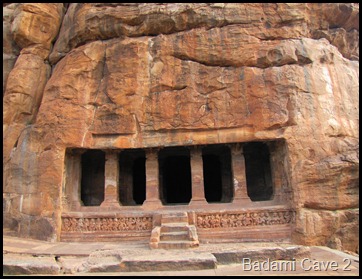
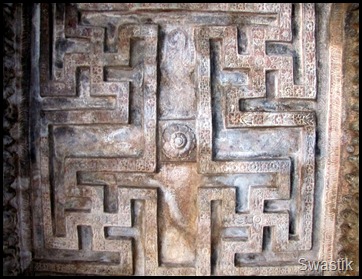
On the other end, we have the Narasimha avatar of Vishnu who slayed the demon Hiranyakashyap. Other avatars are also depicted like the Varaha avatar, saving Bhoodevi from the demon Hiranyaksha, the Matsya avatar and the Kurma avatar helping during Samudra manthan. Also we have Vamana & Vishnu swaroopa pushing Bali into Paataal Loka. On the walls we also saw relief of Kubera and Ashtadipalakas. There was this very creatively carved figure of 3 faced child with 4 hands and 4 legs being shared. The sculptor has cleverly shared the 3 faces and 4 hands in such a way that it looks like 2 hands for each face. The interpretation is also given next to it.

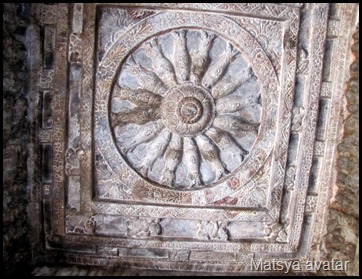
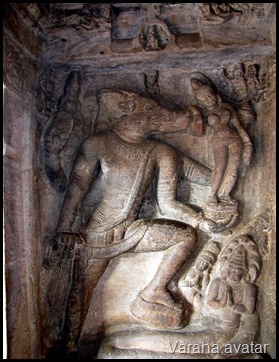

Between Cave2 and Cave 3, there is a natural cave without any carvings probably used by the Buddhists.
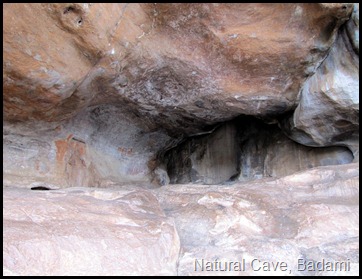
As we proceeded towards cave 3, we found gateway wall from where we can see the secret staircase leading to the top, built by Tipu Sultan. This staircase is now sealed as each stair is almost 1 feet which makes it very difficult to climb up and down.



We then moved to cave 3, which is called the MahaVishnu cave, dedicated to Lord Vishnu. This cave resembles a palace with Vishnu sitting on a snake called Ananthasina and looks like a darbar with the king taking note of the proceedings. This was probably the way of Chalukyas of telling the world how they used to rule..
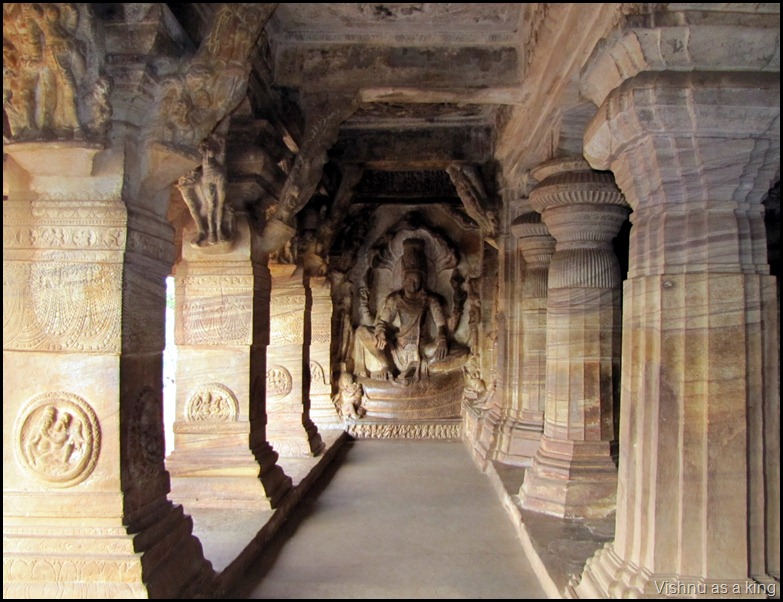
A striking difference between cave 2 and cave3 is the carving of Harihara which is flanked by women and his vehicle, here he is all alone with a smiling face.

Another interesting carving was that of a statue that looked like a child from one end and Hanuman when viewed from another angle. Also we have a Nandi and an elephant carved out of a single statue.

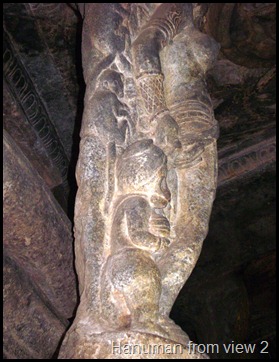
The difference can be found by covering a part of the statue. One more interesting feature here are the paintings made out of organic paints. The paint is still visible even after 1400 years.

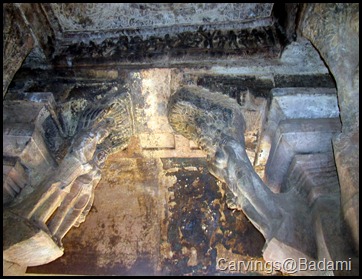

Cave 4 is dedicated to the Jain Teerthankaras dating back to 6th century. We can see Mahavira in a sitting posture and many Jain teerthankaras belonging to Shwetambara and Digambara sect are depicted on the walls.
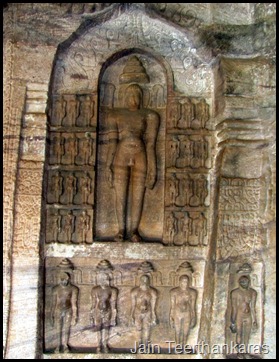
We have a striking view of the whole town from the top. The holy Agasthya teertha which is believed to have sacred water can be seen. It is said that the ruler Pulikesi-I was cured of his ailments by the holy waters of Agastya teertha which is filled by a waterfall formed during rains. The Bhootnath temples dedicated to Shiva are built on the banks of Agastya teertha. One is the old Bhoothnath temple which is built in the North India style with towers like temples in Varanasi, Gaya, and Orissa. The other Bhoothnath temple is built in Dravidian architecture like the ones in Kanchipuram and Tanjavur.

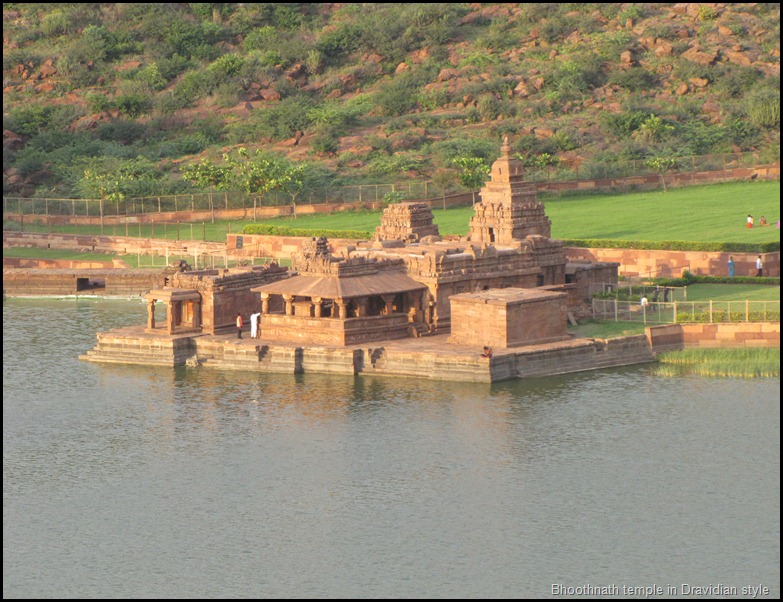
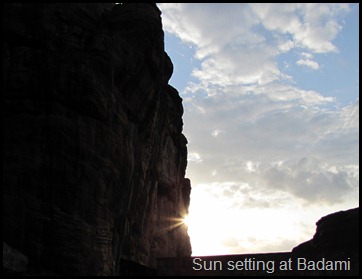


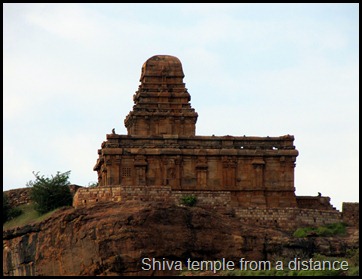

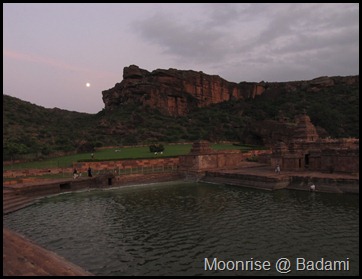
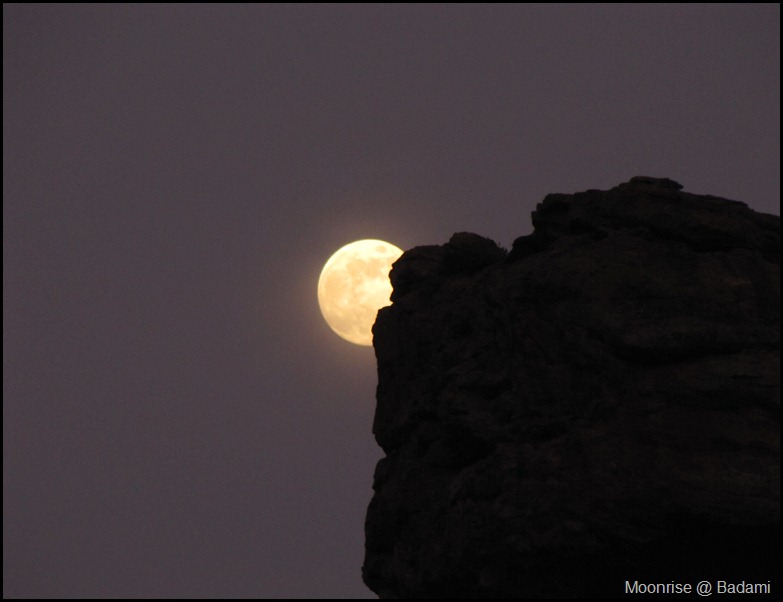
This place has to be experienced as it is the feeling of going over 1400 years back in history and its much more to be experienced than reading or viewing pictures. This is probably the best gift the Chalukyas have given to Karnataka.
Around Badami: Looking at the architectural beauty of Badami, one may think that its all over in Badami. But we have many more legacy left by the Chalukyas around Badami. Few of them are below:
Banashankari Amma temple: Originally built by the Chalukyas in the 7th century but later renovated by the Marathas, this is one of the main pilgrim centers in North Karnataka, just 5 kms from Badami. Ancient scriptures indicate that Goddess Shakambari which is an incarnation of Parvati, had come down and saved this region from the demons. The temple, initially built in Dravidian style, has been rebuilt in Vijayanagara style architecture.
Mahakuta: Just 14 kms from Badami, is the Mahakuta group of temples date back to the 5th century. One thing to be noticed here is most of the temple complexes have designs of both Dravidian and Nagara (North Indian) style. It has a large pond and several temples which has intricate carvings and inscriptions. The name is derived from the oldest temple in the complex, Makuteshwara temple. There is a Pushkarni as well in the temple in which there is a four faced Shivalinga.
Pattadakal: This place is around 12 kms from Badami and is a UNESCO World heritage site. We have a group of temples which form a huge temple complex.
Aihole: Around 41 kms from Badami, this place was the first capital of the Chalukyas. With over 100 temples in this town, it is one of the places worth visiting in this circuit.
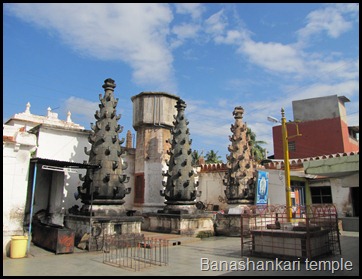


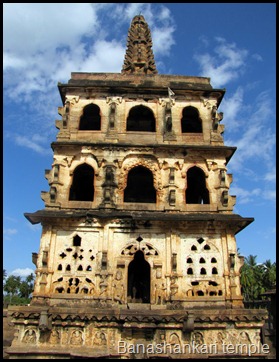
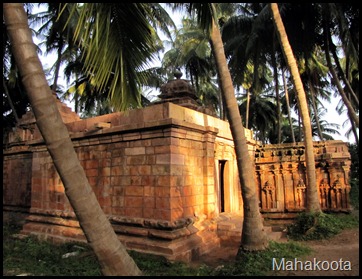



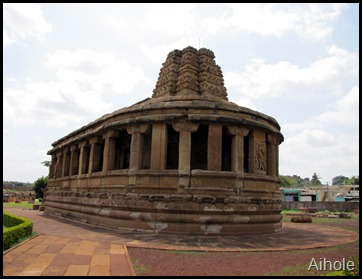
How to reach: The best option to travel is by rail from Bangalore. Train no 06535 Bijapur express on Sunday, Tuesday, Wednesday, Friday and 16535 Gol Gumbaz express on other days leaves Yesvantpur at 19:45 and reached Badami the following day at 07:33. Return train departs from Badami at 20:00 and reaches Yesvantpur the following day at 09:15.
Many KSRTC buses are available from major cities in Karnataka to Badami.
By Car: Around 500 kms from Bangalore, take the NH4 towards Tumkur, At Chitradurga, turn right towards NH13 to Hospet, from Hospet, travel towards Gadag on NH 63. From Gadag take the Badami road via Ron.
Reference: http://en.wikipedia.org/wiki/Badami
http://en.wikipedia.org/wiki/Banashankari_Amma_Temple
http://en.wikipedia.org/wiki/Mahakuta_group_of_temples
Map:
View Larger Map




nice post ...keep it up.
ReplyDeleteNice to know how Badami gets it's name. :)
ReplyDeleteGreat shots as always.
Happy New Year, Arun.
After reading your post, now am eagerto visit Badami.
ReplyDeletehttp://unparalleledindia.blogspot.in/
Thanks....Very Useful one...................We are leading Temple architect in tamilnadu and Construction Company using traditional Indian architecture. Also built Hindu temple design architecture without steel reinforcement with natural stone for Vastu shastra architecture in Chennai.
ReplyDeleteTemple Architect In Tamilnadu